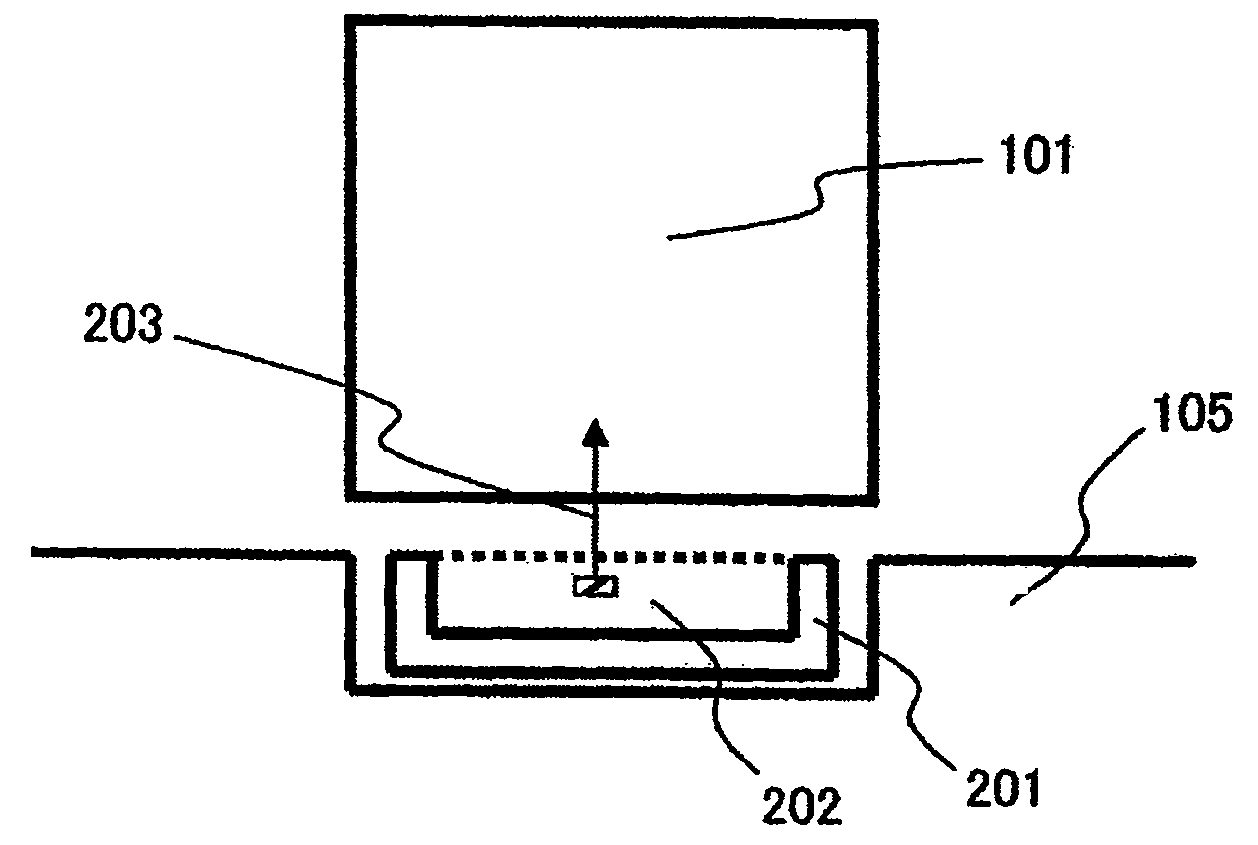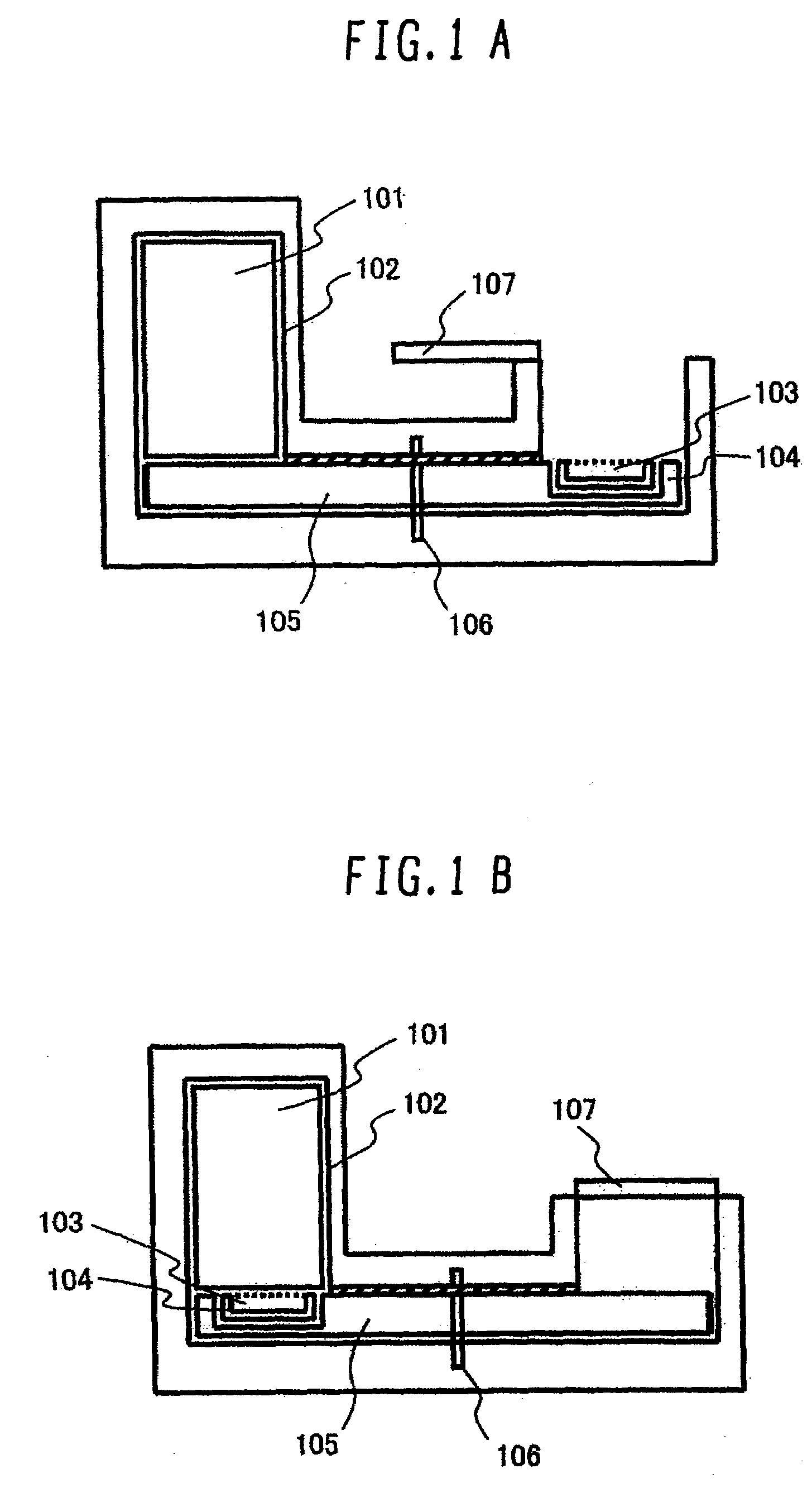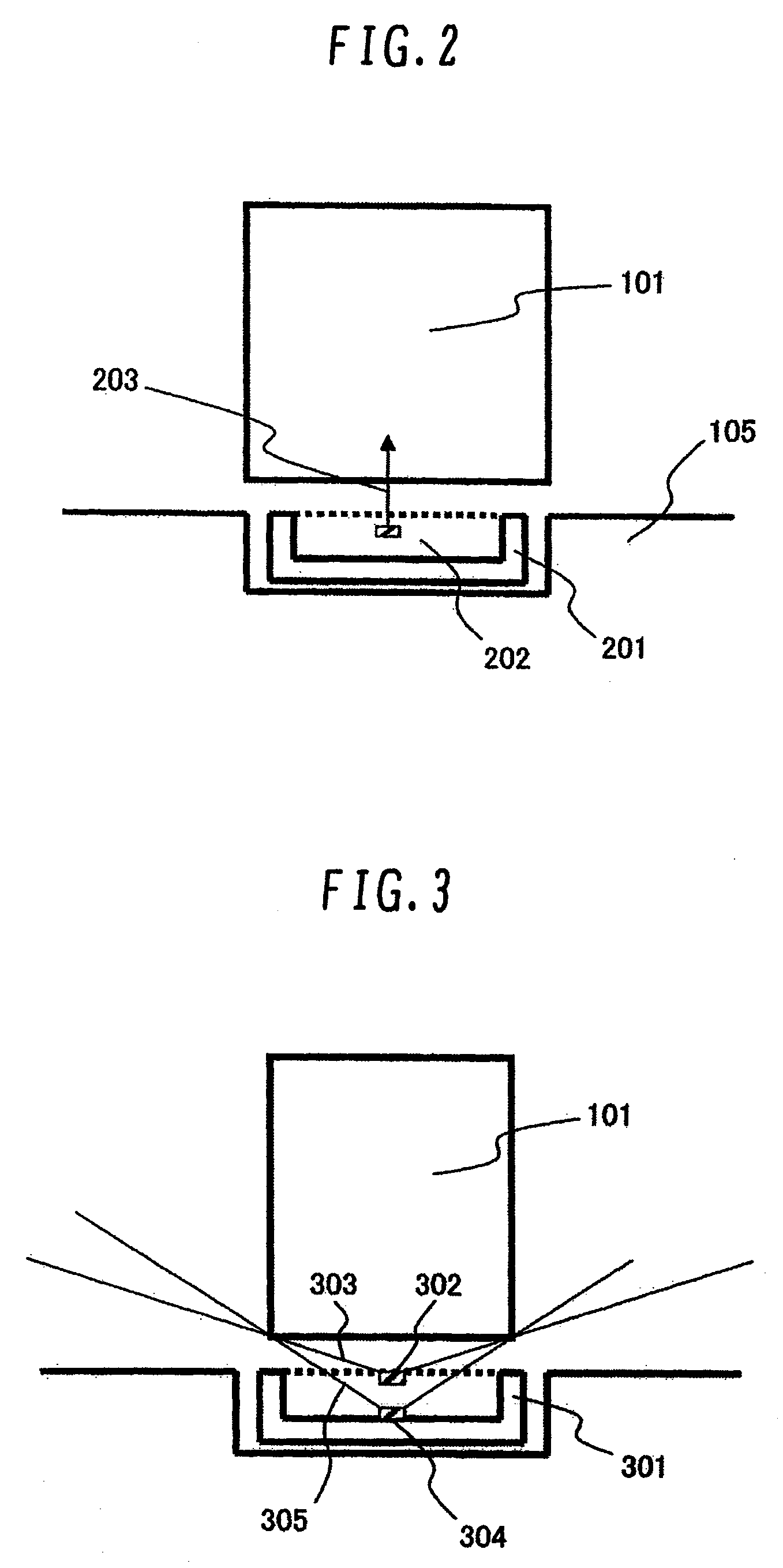Luminescence measuring apparatus
a technology of light-emitting measuring apparatus and light-emitting area, which is applied in the direction of optical radiation measurement, color/spectral property measurement, instruments, etc., can solve the problem of limited light emission area (light reception area), and achieve the effect of increasing direct light received, decreasing reflection, and decreasing light intensity decay
- Summary
- Abstract
- Description
- Claims
- Application Information
AI Technical Summary
Benefits of technology
Problems solved by technology
Method used
Image
Examples
first embodiment
[0020]FIGS. 1A and 1B show a first embodiment of the present invention. In FIG. 1A, measurement is not being performed. In FIG. 1B, measurement is being performed.
[0021]According to the present invention, a detector 101 is installed inside a dark room 102 as shown in FIG. 1A. A fluid 103 including a luminescent substance is contained in a vessel 104. With a cover 107 opened, the vessel 104 is set on a vessel carrier 105 which can be rotated by a rotation axis 106. By a part of the surface of the vessel carrier 105, the detector 101 remains shielded from external light.
[0022]To perform measurement, the cover 107 is closed as shown in FIG. 1B. Then, the rotation axis 106 is spun to rotate the vessel carrier 105 and slides the luminescent-substance-included fluid 103 contained in the vessel 104 set on the vessel carrier 105 until the fluid 103 comes right under the detector 101. Under this condition allowing the detector 101 to receive light only from the luminescent substance, the amo...
second embodiment
[0023]FIG. 2 illustrates a second embodiment of the present invention. It shows how the opening of the vessel is disposed relative to the detector when measurement is being performed. The detector 101 detects light 203 from a luminescent-substance-included fluid 202 contained in a vessel 201 held by the vessel carrier 105. Since the opening of the vessel 201 faces the detector 101, the light 203 does not propagate through the vessel 201 and therefore does not decay in intensity. The detector 101 shows high measurement sensitivity since such incident light 203 is detected.
third embodiment
[0024]FIG. 3 illustrates a third embodiment of the present invention. It shows how direct light from the luminescent-substance-included fluid in the vessel is received by the detector when measurement is being performed. The range 1303 of direct light incident on the detector 101 from a luminescent substance 1 (302) in a vessel 301 is wider than the range 2 (305) of direct light incident on the detector 101 from a luminescent substance 2 (304) which is farther from the detector 101 than the luminescent substance 1 (302). In terms of the amounts of direct light, this means that the detector receives more light from the luminescent substance 1 (302) that is located closer to the detector than from the luminescent substance 2 (304) that is located farther from the detector.
[0025]Thus, it is possible to detect more direct light by forming the vessel so that the luminescent-substance-included fluid contained therein is located nearer to a measuring tool and scattered more thinly or subst...
PUM
 Login to View More
Login to View More Abstract
Description
Claims
Application Information
 Login to View More
Login to View More - R&D
- Intellectual Property
- Life Sciences
- Materials
- Tech Scout
- Unparalleled Data Quality
- Higher Quality Content
- 60% Fewer Hallucinations
Browse by: Latest US Patents, China's latest patents, Technical Efficacy Thesaurus, Application Domain, Technology Topic, Popular Technical Reports.
© 2025 PatSnap. All rights reserved.Legal|Privacy policy|Modern Slavery Act Transparency Statement|Sitemap|About US| Contact US: help@patsnap.com



